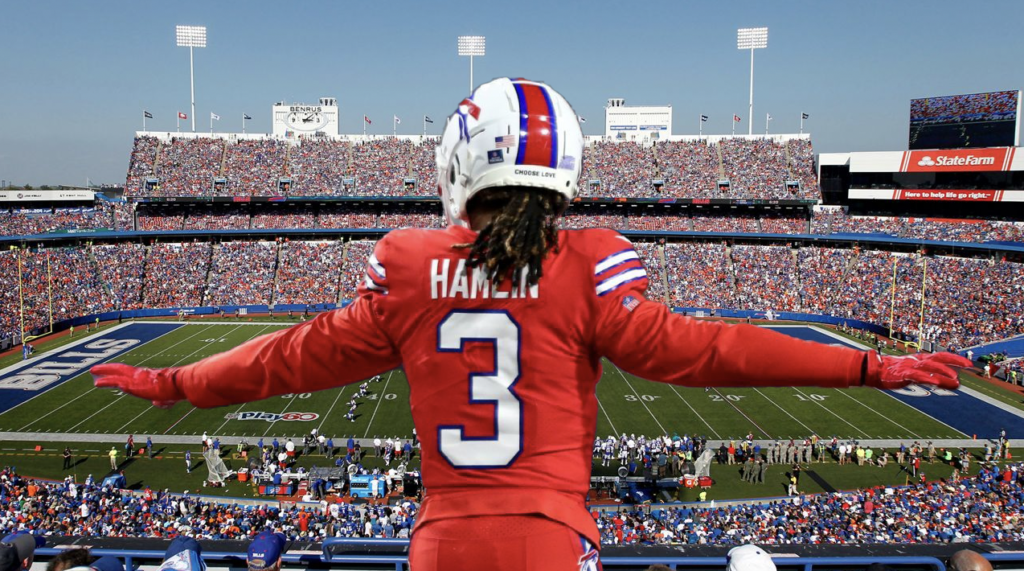In the wake of the Kansas City Chiefs’ victory over the Philadelphia Eagles in Super Bowl LVII, NFL news will likely die down for a while as fans turn to speculation about offseason free agent moves and the draft. However, one of this year’s biggest stories will remain Buffalo Bills safety Damar Hamlin, who suffered a life-threatening injury during a game against the Cincinnati Bengals on Jan. 2.
The NFL is no stranger to injury controversies, as they have long been under fire for its history of concussions and later complications its players face, including chronic traumatic encephalopathy (CTE). A hit to the head or neck area or even an awkward fall on the turf can lead to a concussion, making it a common injury in the NFL
However, what made Hamlin’s injury even more bizarre is that it didn’t occur on one of those plays.
On what seemed like a routine play, he tackled Bengals wide receiver Tee Higgins. After taking a few steps, he collapsed and remained unconscious on the field until he was assisted into an ambulance and taken to the University of Cincinnati Medical Center.
First, the NFL made the right decisions surrounding the incident. Often-criticized commissioner Roger Goodell unquestionably made the correct choice calling off the game after about 15 minutes: There was no chance the players could have finished the game after witnessing Hamlin’s life-threatening injury. While some have bashed Goodell for not taking immediate action and waiting several minutes to call the game off while Hamlin was given CPR on the field, many have defended his decision, arguing that immediate cancellation would have caused a logjam of fans outside the stadium and that could have hindered the transport of the ambulance that ultimately took Hamlin to the hospital.
After the game, fans, players and teams took to social media to offer their support for Hamlin. Star players like quarterbacks Josh Allen, Tom Brady and Patrick Mahomes tweeted their prayers for Hamlin, as did dozens of other players. Fans across the country also donated to Hamlin’s toy drive fundraiser as a way of showing support.
For those who ask what the NFL can learn from Hamlin’s injury, the answer is, as scary as it might sound, not a whole lot. Unfortunately, it is difficult to prevent injuries like Hamlin’s. While speculation on the specifics of his condition should be left to doctors, the injury was not a case of a dangerous or reckless tackle — it is one that happens on a routine play and there is simply no way to prevent these types of injuries. NBA player Reggie Lewis suffered a sudden cardiac arrest during practice in 1993 due to a pre-existing heart condition, and ultimately passed away. While Hamlin’s injury might have been a completely different issue, the unfortunate fact is that these types of health issues could happen anywhere, and are not specific to football or even a sport with less contact like basketball.
However, despite the fact that the NFL might not be able to do anything to prevent these types of incidents in particular, one consequence it might have had was increasing public awareness about other types of injuries that NFL players face. More people might learn of cases like former San Diego Chargers linebacker Junior Seau, who committed suicide at the age of 43 and had clear signs of CTE after his death. Hamlin’s might not have been a head injury, but it definitely put the spotlight on NFL injuries as a whole, which could lead to increased scrutiny over their handling of players’ frequent concussions.
But ultimately, while the NFL has issues with handling concussions, they handled this incident as best as they could. Fans should leave the conspiracy theories to rest and simply hope that Hamlin continues his recovery and maintains his health.


























